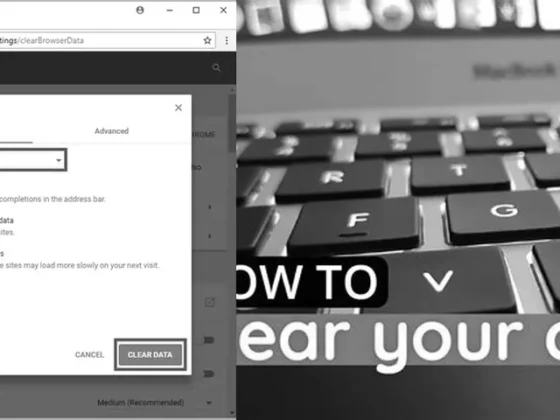How Can I Get My Screen Back To Normal: Are you tired of squinting at your screen or dealing with wonky display settings? If you’re wondering, “How can I get my screen back to normal?” then look no further. In this blog post, we will demystify screen resolution and guide you through the steps to correct orientation, exit full-screen mode, and adjust screen size. Whether you’re a Windows 10 user or simply seeking enhanced display quality, we’ve got you covered. Say goodbye to blurry images and hello to a visually pleasing experience. Get ready to reclaim your screen’s normality!
Understanding Screen Resolution and Normal Size
Screen resolution is a critical component of your computing experience. It affects the clarity of text and images on your screen. The term “normal size” typically refers to the display settings that were set by default when your device was first set up. These settings are designed to offer the best balance between readability and screen real estate.
Identifying the Recommended Resolution
To find the recommended resolution for your screen, follow these steps:
- Right-click on your desktop and choose Display Settings.
- Scroll down to the Resolution option.
- Click on the drop-down menu.
- Look for the resolution marked as Recommended and select it.
This is usually the highest resolution your monitor can support and is calibrated to match the physical dimensions of your screen.
Correcting Screen Orientation with Keyboard Shortcuts
Sometimes, your screen might turn sideways or upside down, which is disorienting. To quickly fix this:
- Press the Ctrl + Alt + ↑ keys simultaneously. This shortcut brings your display back to its standard orientation.
- If the screen is rotated 90 degrees, you can use Ctrl + Alt + → or Ctrl + Alt + ← depending on the direction of the rotation.
- To flip the screen upside down, press Ctrl + Alt + ↓.
Exiting Full Screen Mode in Windows 10
When you’re in full screen mode and you need to access other applications or your desktop, it’s important to know how to exit this view. On Windows 10, this is easily done by pressing the F11 key. This toggles full screen mode on and off in most applications, such as web browsers and media players.
Adjusting Screen Size via Display Settings
If your screen size seems off, perhaps too large or too small, adjusting it back to normal is a straightforward process. Follow these detailed steps to correct your screen size:
- Right-click on your desktop and choose Display Settings.
- Click on Advanced display settings.
- Select the Resolution drop-down menu.
- Choose the appropriate resolution value that best fits your screen. If in doubt, select the “Recommended” option.
- Click Apply and then Keep changes.
After applying the settings, your screen should reflect the changes immediately. If the display looks good, click “Keep changes” to confirm.
Fixing Screen Resolution for Enhanced Display Quality
The resolution you select can have a significant impact on the quality of your display. Here’s how to ensure you’re getting the most out of your screen:
- Understand Resolution: The higher the resolution, the more pixels are displayed, leading to a sharper and more detailed image. However, very high resolutions on small screens can make text and icons too small to read comfortably.
- Aspect Ratio: Make sure the resolution you select matches the aspect ratio of your monitor (commonly 16:9 for modern screens) to prevent stretching or squashing of the display.
- Refresh Rate: While adjusting resolution, also check the refresh rate. A higher refresh rate can make the display feel smoother, particularly when watching videos or playing games.
Remember that the “Recommended” settings are typically a good starting point as they are tailored to your specific monitor and graphics card.
Troubleshooting Common Screen Resolution Problems
At times, even after setting the recommended resolution, you might experience display issues. Here are a few troubleshooting steps:
- Update your graphics drivers through the Device Manager or directly from the manufacturer’s website.
- Check your monitor’s connection to ensure it’s properly plugged into your computer.
- Reset display settings to default in the graphics control panel software.
- If you’re using multiple monitors, ensure that the correct screen is set as the primary display.
Enhancing User Experience with Optimal Display Settings
The goal is to have a comfortable and productive experience when using your computer. Here are some final tips to enhance your user experience:
- Adjust Scaling: If text and items are too small at higher resolutions, adjust the scaling options in Display Settings to increase the size of text, apps, and other items.
- Calibrate Your Display: Use the built-in color calibration tool in Windows to adjust your screen’s color profile, ensuring that you see accurate colors.
- Consider Ergonomics: Position your monitor at eye level and at an appropriate distance to reduce strain on your eyes and neck.
Conclusion
Getting your screen back to its normal size and resolution is usually a matter of a few clicks within the display settings. By understanding and effectively navigating these settings, you can enhance your viewing experience, protect your eyes from strain, and ensure that your work or entertainment sessions are as comfortable as possible. Should you face any issues, the troubleshooting steps provided can help you resolve most common screen resolution problems.
Remember that personal preference plays a role, and what is normal for one user may differ for another. The ultimate aim is to create an environment that suits your specific needs and allows for a pleasant and efficient computer experience.
FAQ & Related Questions about How Can I Get My Screen Back To Normal?
Q: How can I quickly revert my screen back to its normal size?
A: To quickly revert your screen back to its normal size, you can select the recommended resolution in the display settings menu.
Q: How do I turn my screen back to normal using a shortcut?
A: You can use the shortcut “Ctrl + Alt + ↑” to bring your display back to its normal position.
Q: How do I set my screen back to normal size on Windows 10?
A: Here are five steps to fix your screen size on Windows 10:
1. Right-click on your desktop and choose Display Settings.
2. Click on Advanced display settings.
3. Select the Resolution drop-down menu.
4. Choose the appropriate resolution value.
5. Click Apply and Keep changes.
Q: Why is my monitor not displaying correctly?
A: If your monitor is not displaying correctly, it could be due to problems with your graphics card. Try updating your graphics card’s driver to see if it resolves the issue.
Q: How can I reset Windows to fix my screen display?
A: You can reset Windows to its default settings to fix any issues with your screen display.


